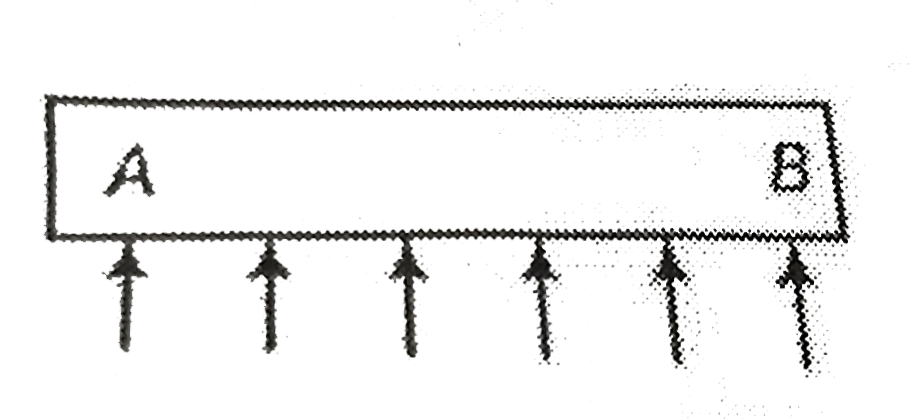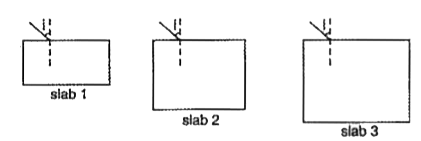Rays of light fall on a glass slab (μ>1) as shwon in figure. If μ at A is maximum and at B it is minimum, then what will happen to these rays?

They will tilt towards A
They will tilt towards B
They will not deviate
There will be total internal reflection
(c) For normal incidence, Whatever be refractive index.
l=0,r=0, so there is no deviation of ray.
Topper's Solved these Questions
Similar Questions
A ray of light falls on three glass slabs of the same material at the same angle of incidence. In which case, is the lateral displacement of the emergent ray of light (a) maximum
(b) Minimum

View SolutionA ray of light falls on a glass slab at an incident angle of 45∘ and refracted at angle of 30∘.
What is the refractive index of the glass with respect to air ?
View Solution
Knowledge Check
Rays of light fall on a glass slab (μgtl)as shown in the figure. If μ at A is maximum and at b it is minimum, then what will happen to these rays?
 Athey will tilt towards ABthey will tilt towards BCthey will not deviateDthere will be total internal reflection
Athey will tilt towards ABthey will tilt towards BCthey will not deviateDthere will be total internal reflectionRays of light fall perpendicularly on a glass slab (n>1) as shown in figure. If n at A is maximum and n at B is minimum, then the rays will
 Atilt towards ABtilt towards BCnot deviateDundergo total internal reflection
Atilt towards ABtilt towards BCnot deviateDundergo total internal reflectionA ray of light falls on a glass slab making an angle of 45∘ with normal. The emergent ray makes the same angle with normal. It shows that
Athere is no refraction taking placeBincident ray is perpendicular to emergent rayCemergent ray is parallel to the incident rayDthe given case is not possible.
A ray of light falls on a glass slab at an incident angle of 45∘ and refracted at angle of 30∘.
What is the measure of the angle of emergence 'e' ?
View SolutionA ray of light falls normally on a glass slab. Draw a diagram showing the path of the ray till it emerges out of the slab. What is the angle of incidence and angle of refraction at each surface of slab ?
View SolutionA ray of light falls on a glass plate of refractive index μ=1.5.
What is the angle of incidence of the ray if the angle between the reflected and
refracted rays is 90∘?
View SolutionA ray of light falls on a glass plate of refractive index μ=1.5.
What is the angle of incidence of the ray if the angle between the reflected and
refracted rays is 90∘?
View SolutionA ray of light falls on a glass plate of refractive index μ=1.5.
What is the angle of incidence of the ray if the angle between the reflected and
refracted rays is 90∘?
View Solution
